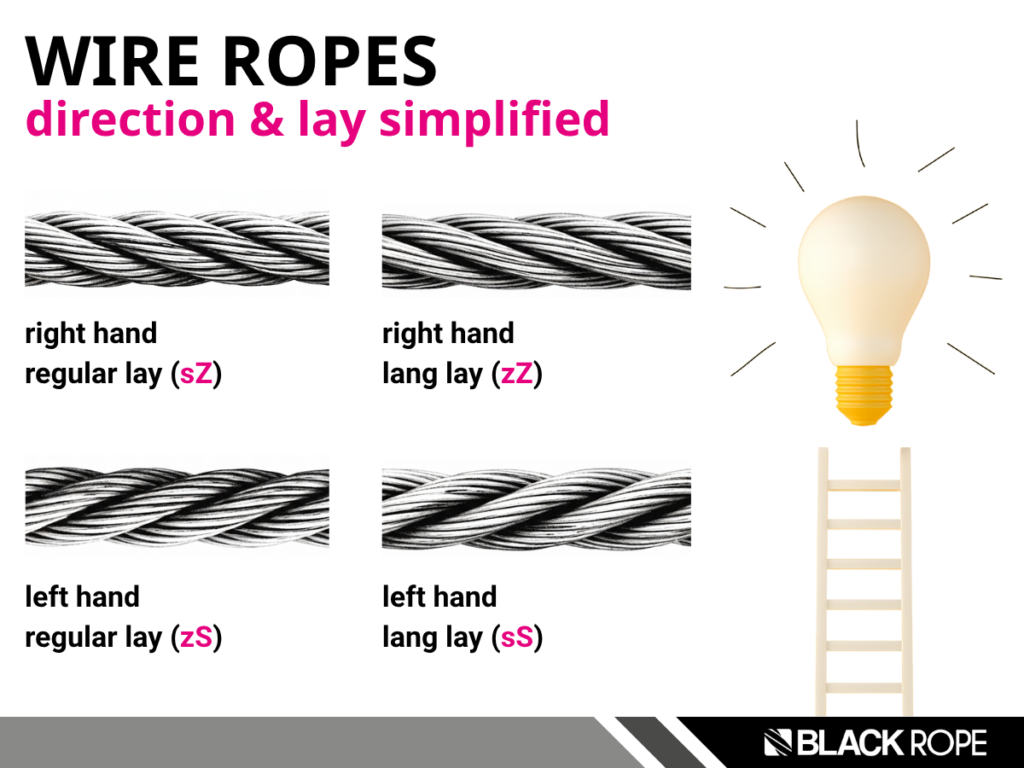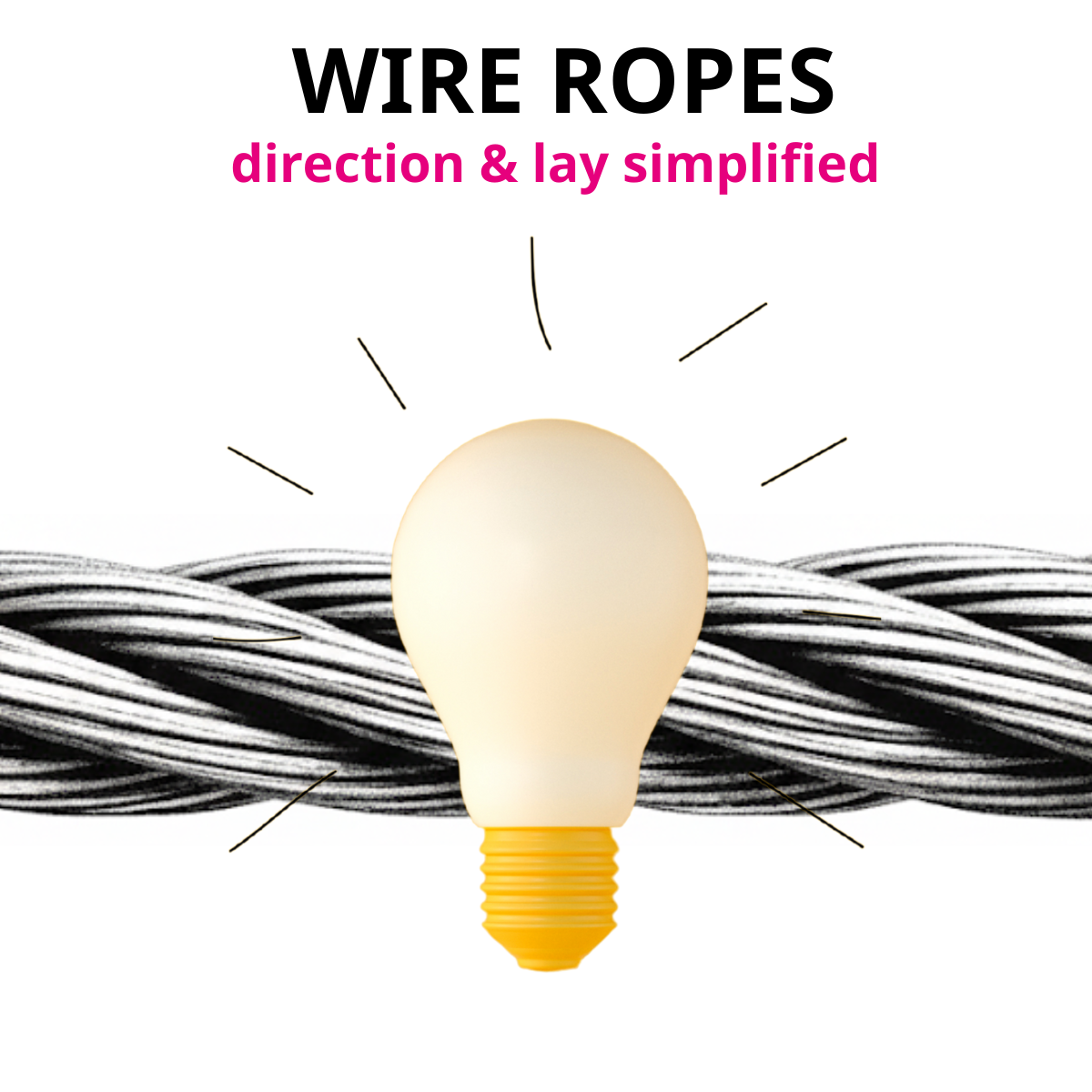
ꙮ 𝐔𝐧𝐝𝐞𝐫𝐬𝐭𝐚𝐧𝐝𝐢𝐧𝐠 𝐖𝐢𝐫𝐞 𝐑𝐨𝐩𝐞 𝐃𝐢𝐫𝐞𝐜𝐭𝐢𝐨𝐧 𝐚𝐧𝐝 𝐋𝐚𝐲
Wire Ropes might look like a simple twisted cable, but their construction is very specific, directly impacting their performance. Two key features define a wire rope’s construction: its direction and its lay.
1️⃣ 𝐃𝐢𝐫𝐞𝐜𝐭𝐢𝐨𝐧 (𝐨𝐫 𝐇𝐚𝐧𝐝)
This refers to the direction in which the strands are twisted around the rope’s central core. Imagine looking along the length of the rope:
▪ 𝐑𝐢𝐠𝐡𝐭 𝐇𝐚𝐧𝐝 (𝐙-𝐝𝐢𝐫𝐞𝐜𝐭𝐢𝐨𝐧): The strands appear to spiral upwards to the right, much like the middle part of the letter “𝐙”.
▪ 𝐋𝐞𝐟𝐭 𝐇𝐚𝐧𝐝 (𝐒-𝐝𝐢𝐫𝐞𝐜𝐭𝐢𝐨𝐧): The strands appear to spiral upwards to the left, like the middle part of the letter “𝐒”.
2️⃣ 𝐋𝐚𝐲 (𝐨𝐫 𝐓𝐰𝐢𝐬𝐭)
This describes how the wires are twisted within each strand, relative to how the strands are twisted around the core. There are two main types of lay:
▪ 𝐎𝐫𝐝𝐢𝐧𝐚𝐫𝐲 (𝐨𝐫 𝐑𝐞𝐠𝐮𝐥𝐚𝐫) 𝐋𝐚𝐲: The wires within a strand twist in one direction, and the strands themselves twist around the core in the opposite direction. This makes the wires on the surface of the rope appear to run almost parallel to the rope’s axis. Regular lay ropes are generally more stable and resistant to kinking or unlaying.
▪ 𝐋𝐚𝐧𝐠 𝐋𝐚𝐲: Both the wires within each strand and the strands themselves twist in the same direction. This results in the wires on the surface of the rope lying at an angle to the rope’s axis. Lang lay ropes typically offer better flexibility, fatigue & abrasion resistance, because the contact area between the rope and sheaves/drums is larger, distributing wear more effectively. However, they are more prone to kinking and twisting, and generally require both ends to be secured to prevent them from unraveling.
↦ 𝐓𝐡𝐞 𝐰𝐢𝐫𝐞 𝐫𝐨𝐩𝐞 𝐜𝐚𝐭𝐞𝐠𝐨𝐫𝐢𝐞𝐬, 𝐛𝐚𝐬𝐞𝐝 𝐨𝐧 𝐥𝐚𝐲 𝐝𝐢𝐫𝐞𝐜𝐭𝐢𝐨𝐧, 𝐚𝐫𝐞 𝐬𝐮𝐦𝐦𝐚𝐫𝐢𝐳𝐞𝐝 𝐛𝐞𝐥𝐨𝐰:
| Lay Name | Lay Type | Wire Direction | Strand Direction | Code |
| Right Hand Regular Lay (RHRL) | Regular (Opposite) | Wires twist left (s) | Strands twist right (Z) | sZ |
| Right Hand Lang Lay (RHLL) | Lang (Same) | Wires twist right (z) | Strands twist right (Z) | zZ |
| Left Hand Regular Lay (LHRL) | Regular (Opposite) | Wires twist right (z) | Strands twist left (S) | zS |
| Left Hand Lang Lay (LHLL) | Lang (Same) | Wires twist left (s) | Strands twist left (S) | sS |

